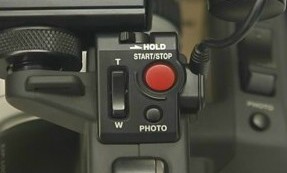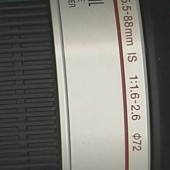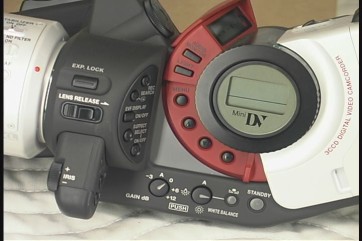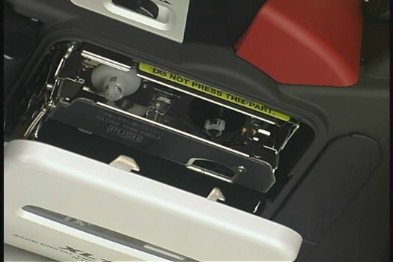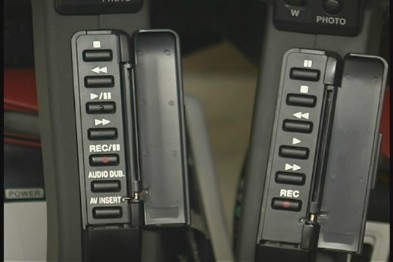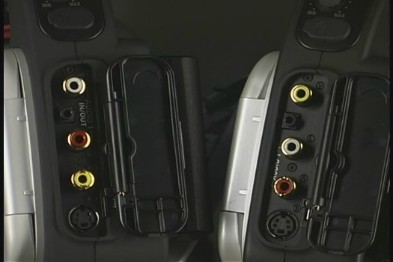The XL1 Watchdog
|
> top of page < |
New Owner's First Impressions:
Jon Bushey from August, 2001
This is a quick review of the Canon XL1S -- the "S" denoting the new model just released in August of 2001. I have had a few days to play with the new camera and I will share my findings in this article. I look forward to writing additional articles later when I have more experience with the camera.
First, I should cover some required items. This article is copyright 2001 by Jon B. Bushey. All pictures are copyright 2001 by Jon B. Bushey and were shot with Canon XL1 cameras. This story contains many pictures so the pages may be slow to load. Also, let me mention the care and time I took to insure this story was a reliable source of information. I used a scientific approach to experimenting with the XL1S. The tests for this story were run at least two times to obtain consistent, dependable results. Of course, the tests were run in a controlled environment to limit the effects of outside influences. For the purpose of this story, the XL1's were treated very nicely. However, in a subsequent story, I will beat the heck out of one of these cameras to test its robustness.
Second, let me tell you about my background and my perspective on this story. I am the managing partner in Rapid LLC, a video production company. Rapid does many types of video projects, including corporate, commercials, events, training, documentaries, narratives, and shorts. Note that Rapid does not do weddings in the traditional sense. However, for the purposes of this article, I am pointing out features that will be useful to all professional videographers: wedding, ENG, movie, event, and studio. I have quite a bit of experience - from assisting on Hollywood movies to producing my own movies. One of the movies I produced was accepted into the library of The Academy of Motion Picture Arts and Sciences (The Academy Awards.) Rapid has over a 1000 hours of DV footage - most shot with Canon XL1 cameras. Rapid has shot for cable networks, major corporations, non-profit corporations, and individuals. Our crews have traveled all over the country. Rapid is headquartered in Salt Lake City, Utah with buildings for our Soundstage and Post-production Facilities (Rapid Post).
At first glance, the new camera is almost identical to the old model. From a distance, it has the same profile, colors, and markings. Closer examination reveals many changes. One of the first things, is the change of markings on the top of the camera. The top handle controls have been re-designated: "Hold" to "Lock".
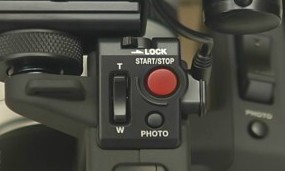
The new lens is almost impossible to tell from the old - the only external difference being the addition of "II" after the model.
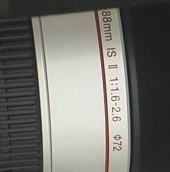
One of the most important changes (not in appearance but function) is to the "business" side of the camera. The complete user interface to the function menu has changed. Good thing, too! The old interface was too clumsy, especially in low light or if you were in a hurry. I have played with the new menus quite a bit and it is a much better system. To get in and out of the menus, you press the menu button. It has been re-positioned. To work through the menu, you use the iris dial and press the iris dial in to select. It is much like a trackball. I am sure you will find yourself spinning and clicking your way through the menus with playful abandon.
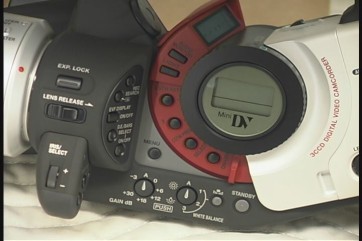
In place of the old menu navigation buttons, are new buttons for storing custom settings, called custom presets. These are similar in function to the setup memory cards of other cameras. These do not store images, but instead configure the camera for different shooters. For example, I prefer a nice sharp image, frame mode, and colors that are true but not too bright. In contrast, I work a lot with Robin Saville, who likes the movie look, with colors a little subdued, and the image a little soft. We could both use the same XL1S and program each of our preferences into the custom presets. Then, each of us could simply pick up the camera, drop in a tape, press our own custom preset and start shooting.
Other changes to this side of the camera include the two new gain settings, +18 and +30. YES, they are noisy but hey, if you have been trying to decide between buying a new camera and buying a nightscope to spy on your neighbors -- well -- forget the nightscope! Buy a XL1S, crank the gain to +30, open the iris, drop the shutter, and with the new CCD chips in this baby - you can see in the dark! Well OK - not quite, but check out the other section of this story for an in-depth look at the low-light capabilities.
Other changes to the controls include three manual white balance memories. The old XL1 had a single manual white balance memory. That was OK, you just had to white balance at each location or when lighting changed. This is a nice feature for me because I can set the white balance to the daylight fixtures in our soundstage and then not lose it when we go to shoot on location. I can see it will be very useful for narrative and documentary work where you are doing several setups a day. The camera can be used at one setup for checking lighting and blocking, then taken to another setup for actual takes while saving the white balance at both setups. These white balance memories allow the camera to move from setup to setup with minimal setup time at each setup. Did that make sense or is it just me?
Oh, I didn't take a picture of this change, but on the tape transport door there is now an "S" in the model number.
Speaking of the tape transport, there are a few changes here. It's hard to miss the yellow warning sticker on the top of the tape mechanism. This is not a good picture - in real life it really sticks out. I think there must have been a few cameras sent in for service after people pushed in the wrong place. Other changes include that the hubs look different. Also the tape receptacle is now open-framed except on the top where a friction-fit piece of metal guides the tape down.
There are two new buttons on the VCR controls built into the top handle. They are "AV Insert" and "Audio Dub". The "AV Insert" records over a section of tape replacing both the video and audio. The "Audio Dub" adds new audio to existing audio and video. Here at Rapid, we prefer to not use the cameras for playback/editing so I did not test the editing features.
One perplexing change is at the back of the camera. It is hidden under the back door. You have to look close or you might miss it. I am not sure this was one of Canon's best "improvements". They moved the RCA connector for video from the top position to the bottom position. In the dark it is almost impossible to tell white from yellow but that's the two color coded connectors Canon swapped. The yellow is now where the white was and the white is now where the yellow was! Did that make sense? Anyway, do not plug your video cable into the top connector ANY MORE. It may look yellow but it IS NOT.
That's about it for the external changes. I almost wish Canon had made a more noticeable change to the look of the camera. Some thing that would unmistakably identify this camera as a "S" model. I know they worked hard to insure that all accessories would still work for the new model. And that includes cases -- so they could not change the dimensions of the camera. But why not change the color of the viewfinder or change the shape of the microphone windscreen. There is a small change to the viewfinder -- the word "Canon" is now in silver instead of gray... but really... will anybody notice?
Move on to Part Two of Jon Bushey's XL1S Review
Move on to Part Three of Jon Bushey's XL1S Review
Move on to Part Four of Jon Bushey's XL1S Review
Back to the XL1S Owner's Reports Menu
Written by Jon B. Bushey
Thrown together by Chris Hurd
Please direct questions to the DV Info Net Community Forums.
Where to Buy: These dealers are authorized DV Info Net sponsors... | |||
|
|
|
|
|
|
|
|
Please support this site by making your purchases through them. Thanks! | |||
©1998-2008 DV Info Net
The Digital Video Information Network
San Marcos, Texas
You make the only grub what satisfies my gut-worm.
